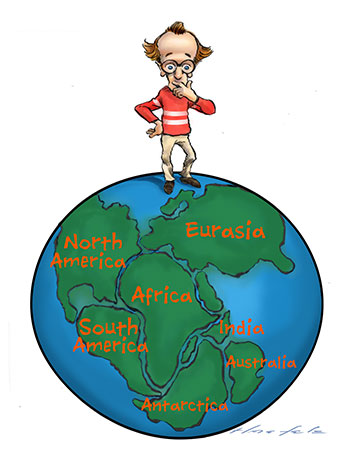When I was first introduced to geography in grade school it seemed pretty dry. We had a brick of a hardcover textbook, with lots of text, some grainy black-and-white photos, and a few maps, graphs and charts. It was not nearly as glamorous as many other things in my world – TV for example – and I wasn’t very excited by it. The word “geography” seemed clunky and dull, like my textbook.
Today I take responsibility for squandering my educational opportunities. But that’s the way it was. Geography didn’t turn me on much in those days. As with so many things, it was travel that awakened in me a lusty fascination with geography.
Travel presents the real world with all its color, sound, smells, tastes and tactile sensations from the feeling of drawing the atmosphere of a place deeply into your lungs; to the feeling of your fingertips on an ancient stone wall. It’s a multi-sensory experience, an ongoing presentation all around. You can turn in different directions at any moment and see different movies, different scenes in the ongoing grand drama of life.
Though I didn’t think I was interested in “geography,” I was certainly interested in what it was made up of. In movies I hungrily devoured the images and sensations of the exotic destinations portrayed. I traveled to them vicariously. In Tarzan movies I saw the jungle. James Bond movies showed many alluring travel destinations, from tropical island paradises to great cities. Documentary movies showed the nature and wildlife of distant places, such as Alaska, Africa and Australia.
When I was able to travel to some of the most amazing places, they ignited a hunger to know more about the history, art, music, politics, economics, biology, anthropology, geology and geography associated with them.
Most of what I know I have learned through travel. After I had seen some of those magical places, I wished I could go back to those classrooms, dig into the old textbooks again, knowing what I know now, and to pepper my teachers with questions.
I can’t go back in time that way, but on tours I’ve had the benefit of great teachers acting as guides who use the lenses of history and the arts and sciences to help you see with your mind’s eye what lies behind what you can see physically in front of you.
All of those subjects combine in the real world. They cannot be separated. The Oxford dictionary defines geography as “the study of the physical features of the earth and its atmosphere,…
Click Here to Read the Full Original Article at The Taucker Travel Blog…
